To cover the time I've been away from this blog, here are some bits & bobs from late June and the month of July...
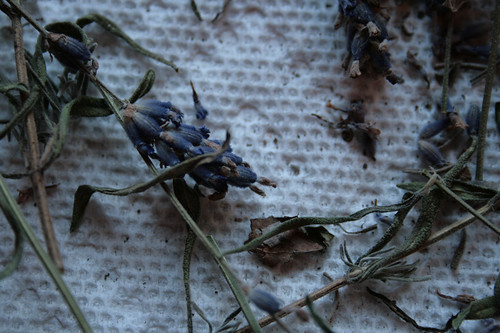
In June the lavender bush bloomed, and I gathered the flowers to dry. I believe it's the 'Hidcote' cultivar, whichever variety is well adapted to wetter, temperate regions. I've had the plant since 2008, and the bush has gotten progressively larger since then, blooming profusely in the summer and showing off its grey-green foliage through the winter. I don't have proper drying equipment, but it's very easy to collect the flowers, tie them into bundles, and hang them around the house for a bit of perfume. The flowers in the photo were too short/small to bundle, so I let them dry on paper towels. When they were finished drying, I pulled off the flowers and stored the herbs in plastic bags.
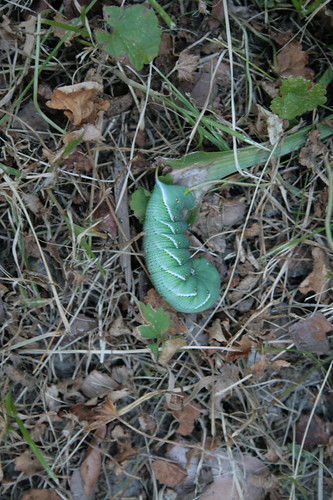
Here is one of the hornworms I found on the tomatoes near the end of June, thrown into the grass for the robins to find. Usually, I don't have problems with these little guys, maybe one or two a year. This year, in the new vegetable garden, I found a whopping three hornworms. OK...not that many, but more than I'm accustomed to. Haven't seen a one since I took this photo. Cabbage worms are generally a bigger problem for me.
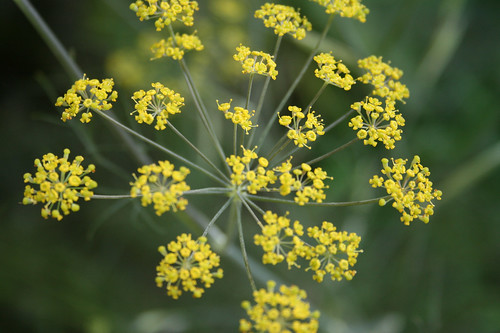
Pretty bronze fennel flowers. My plants returned this year, and the one along the south side of the house is well over 6 feet tall. Amazing. I'm letting the flowers go to seed so I can get some use out of these plants. They don't bulb like Florence fennel does, and their stalks tend to be rough and stringy, so they're not ideal for cooking, but you can use the leaves as an herb/garnish, and the seeds taste just the same.
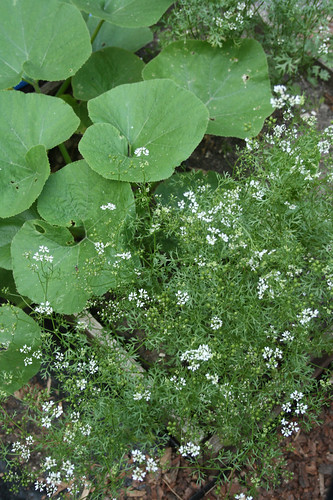
I just love this combination of textures: the large, broad leaves of the squash with the small, feathery leaves of the cilantro going to seed. I'm not sure if these are "correct" companions, but they seemed to do well together. Still waiting for the seeds to dry so I can have coriander. This is a 'Discus Bush Buttercup' winter squash and 'Caribe' cilantro.

Leaf from the 'Rond de Nice' summer squash, which is the closest to a proper bush variety I've found in this family. Actually, only today I figured out that this was the summer squash, not the 'Discus Bush Buttercup' I also planted (which forms less of a proper bush, more of a stocky vine).
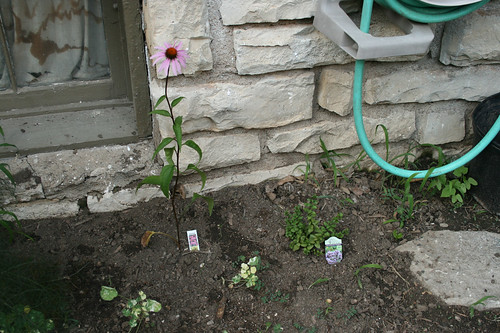
When July came, I decided to visit some plant sales and found quite a few good deals, including this coneflower and oregano plant. When I moved the vegetable garden this summer, I had to rearrange the flagstone path somewhat and pulled out the once-thriving oregano, which I inevitably waited too long to re-plant. The oregano died, so I bought a new plant for a mere $1. Hope it does better!
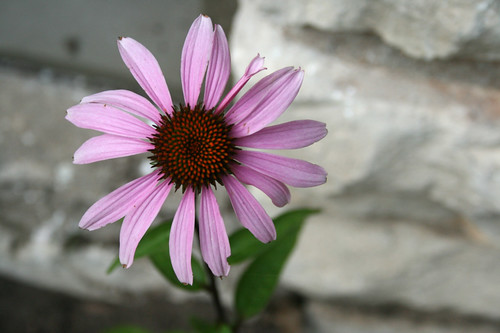
Another shot of the coneflower, the ubiquitous 'Magnus' variety, of course. I like my echinicea pallida plants, but they have less immediate impact, and I thought some variety might be a good idea. I love coneflowers, though. Can never have too many.

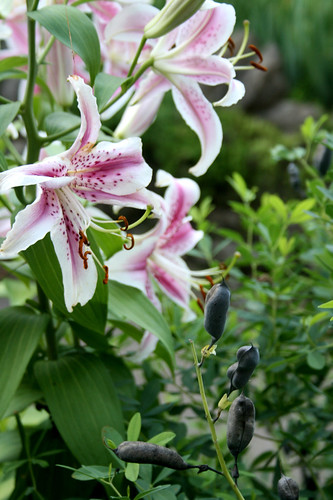
The 'Stargazer' lilies in the front border, putting on their yearly show. I especially like the 2nd photo, because you can see the black seed pods from the baptisia, which is impressively big this year.

One of the lobelias I planted back in May. After I saw these on a camping trip last September, I had to have one. The flowers are on a tall spike and pretty small, but they look a bit more striking in groups. Given the right conditions, these are supposed to spread very reliably. They're native to this region, like wet conditions along river banks, but hold up well through droughts. I'm sure they'd be perfect for a rain garden.
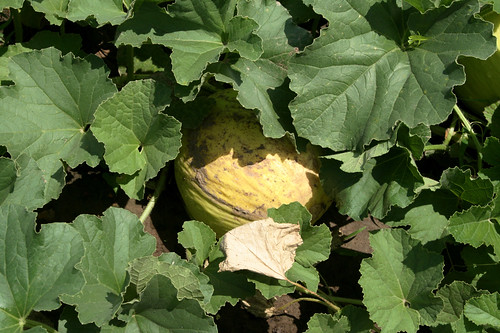
A few weeks ago, we visited my mother and stepfather's house in California, MO and were impressed by how well her garden is doing this year. She planted 3 types of melons, which covered probably 20 square feet or more. They weren't yet ripe, so I just took pictures.
I've avoided growing melons myself, because they tend to put out very long vines and I've yet to find a shorter vined or bush cultivar. If any wayward readers can recommend that works in small spaces, I'd love to hear about it!
4 comments:
Welcome back!
I like the new template you chose and with your avatar at the top of your sidebar it kind of looks like the crow in your avatar is took off and is flying off the blog.
Some lovely pictures you posted here. I'll be reading!
Hi! I have so many blogs in my sidebar, that I don't get them all visited regularly. I keep the ones that haven't posted in a long time, just in case they start again. Well, when I saw your latest post, I came looking to see when you started posting again. It looks like you've had fun making things with your harvests.
There was something else in this post I was going to comment on, but it left my mind. Welcome back! I keep thinking I need to take a break, but haven't so far.
I went back and enjoyed looking at your flowers and such again, then remembered, I was coming to see if you found a good variety of squash to grow, or was it pumpkins? My memory!
My problem with these crops is the caterpillar or worm that gets in the stem and kills the plant, just as the first or second squash or pumpkin is ripening.
Sadly, I had a major squash bug infestation, which destroyed most of the fruit, and I lost at least a couple plants to vine borers. But both the Ronde de Nice summer squash and Discus Bush buttercup squash are beautiful plants that are great for small spaces.
I haven't had much buttercup squash, but the flesh is comparable to butternut in color and flavor. A little sweeter, I think, but you can usually substitute one for the other in recipes w/o much difference.
When I was looking for remedies for squash vine borers and squash bugs online over the summer, I learned that row covers are a good preventive measure for young plants. I'm going to try them next year and maybe hand-pollinate just to be safe.
Post a Comment